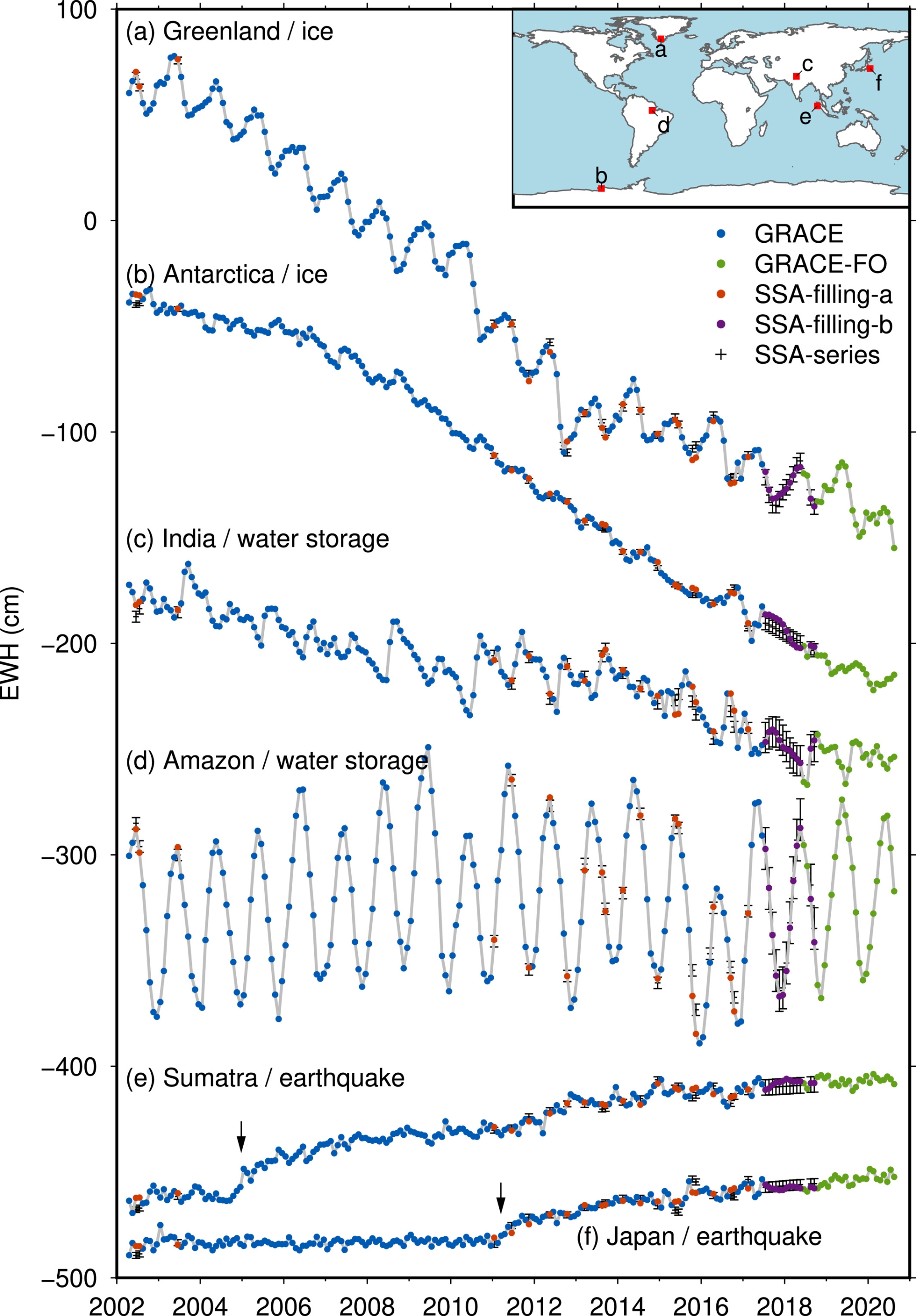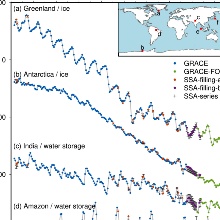The time series of monthly GRACE and GRACE-FO snap-shots suffers from several data outages during the 18-year mission duration. Particularly the 1-year gap after GRACE's mission termination up till the time series continuation with GRACE-FO adversely affects long-term analyses of the global mass distribution. Often such gaps have been filled with model information or with low-resolution gravity fields from, e.g., ESA's Swarm mission. In this publication Dr. Shuang Yi used the information content within the data itself to fill these gaps. He was able to tap into this information content by making use of the data-driven method of singular spectrum analysis, which he applied in the spherical harmonic spectral domain. The resulting "repaired" data set is made available under https://doi.org/10.18419/darus-807.
 Journal of Geophysical Research: Solid Earth, 126, e2020JB021227 / Shuang Yi / Figure 6 (CC BY 4.0)
Journal of Geophysical Research: Solid Earth, 126, e2020JB021227 / Shuang Yi / Figure 6 (CC BY 4.0)


